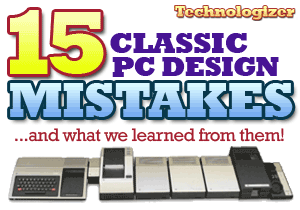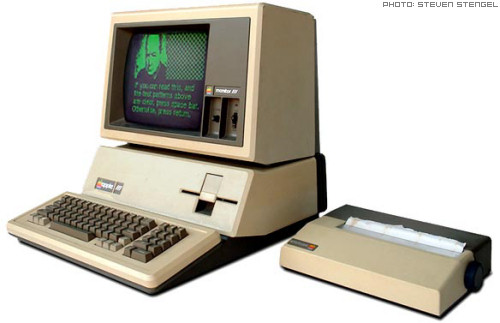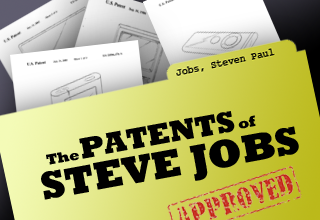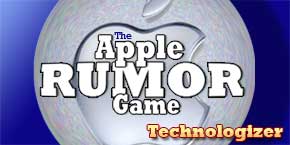 There’s no such thing as the perfect computer, and never has been. But in the personal computer’s long and varied history, some computers have been decidedly less perfect than others. Many early PCs shipped with major design flaws that either sunk platforms outright or considerably slowed down their adoption by the public. Decades later, we can still learn from these multi-million dollar mistakes. By no means is the following list exhaustive; one could probably write about the flaws of every PC ever released. But when considering past design mistakes, these examples spring to my mind.
There’s no such thing as the perfect computer, and never has been. But in the personal computer’s long and varied history, some computers have been decidedly less perfect than others. Many early PCs shipped with major design flaws that either sunk platforms outright or considerably slowed down their adoption by the public. Decades later, we can still learn from these multi-million dollar mistakes. By no means is the following list exhaustive; one could probably write about the flaws of every PC ever released. But when considering past design mistakes, these examples spring to my mind.
Special thanks to Steven Stengel of the Obsolete Technology Homepage for providing many of the photos in this article.
Apple III (1980)

The Apple III was Apple’s first computer not devised by Steve Wozniak, Apple’s co-founder. Instead, a committee of engineers designed it to be the “perfect” business system. With an absurdly high price (options ranged between $4,340 to $7,800–about $11,231 to $20,185 in 2009 dollars) and numerous bugs at launch, the Apple III was doomed to failure.
Problem #1: No Power Supply Fan
The Apple III’s lack of power supply fan caused system to heat up, warping the motherboard and unseating certain socketed chips.
 What Were They Thinking?
What Were They Thinking?
According to Apple insiders, Steve Jobs’ zeal for a simple and silent computer design forced the Apple III team to exclude a cooling fan for the power supply. Apple later suggested a simple fix for the heat-warping problem: raise the Apple III a few inches off a hard surface and drop it, hopefully re-seating the chips in the process. Fortunately, that advice wasn’t required for later Apple computers that lacked fans.
Problem #2: Limited Apple II Compatibility
To run an Apple III in Apple II mode, one had to first boot from a special floppy disk. Once in Apple II emulator mode, the user could not use any of the Apple III’s enhanced hardware, including 80 column text mode or the real-time clock. Compatibility with Apple II software was not perfect, as many software packages used direct memory writes in the form of PEEKs and POKEs that didn’t line up with the Apple III’s memory structure.
What Were They Thinking?
Like IBM and the PC/PCjr, Apple wanted a clear product delineation between their “home” machine (the Apple II) and their “professional” machine (the Apple III). As a result, Apple II compatibility on the Apple III was intentionally crippled.
Continue Reading →

 Among the many uncanny parallels between Stephen Paul Jobs and Walter Elias Disney is this one: Very early on, both abandoned the work that in some respects might seem to define their careers. Walt Disney began as a cartoonist, but by the late 1920s he had nothing to do with the drawing of Disney cartoons and is said to have told folks that he couldn’t have held down an animator’s job in his own studio. And Steve Jobs held technical positions at HP and Atari at the dawn of his time in Silicon Valley, but his contributions to Apple have never been those of an engineer.
Among the many uncanny parallels between Stephen Paul Jobs and Walter Elias Disney is this one: Very early on, both abandoned the work that in some respects might seem to define their careers. Walt Disney began as a cartoonist, but by the late 1920s he had nothing to do with the drawing of Disney cartoons and is said to have told folks that he couldn’t have held down an animator’s job in his own studio. And Steve Jobs held technical positions at HP and Atari at the dawn of his time in Silicon Valley, but his contributions to Apple have never been those of an engineer. It’s the Web’s biggest straw man, and it keeps getting built up, torn down, then built up again. I speak of the idea that a startup is a potential Google killer–a notion that once meant that it promised to be a better search engine than Google, but has lately morphed into suggesting that a Web company of almost any sort could end up dominating the Web the way Google does today.
It’s the Web’s biggest straw man, and it keeps getting built up, torn down, then built up again. I speak of the idea that a startup is a potential Google killer–a notion that once meant that it promised to be a better search engine than Google, but has lately morphed into suggesting that a Web company of almost any sort could end up dominating the Web the way Google does today. Got a moment to get all nostalgic over old electronic equipment? Over on Twitter–where I’m
Got a moment to get all nostalgic over old electronic equipment? Over on Twitter–where I’m  In just a month from now, I and millions of other Trekkies will have our behinds firmly planted in movie theater seats, taking in the latest
In just a month from now, I and millions of other Trekkies will have our behinds firmly planted in movie theater seats, taking in the latest 
 Back on January 9th, Microsoft released a beta version of Windows 7 that was free to anyone who was interested enough to installand try it. That was long enough ago for some of those users to have logged lots of time in this rough draft of the new OS and formed strong, well-informed opinions about its pros, cons, and bottom line.
Back on January 9th, Microsoft released a beta version of Windows 7 that was free to anyone who was interested enough to installand try it. That was long enough ago for some of those users to have logged lots of time in this rough draft of the new OS and formed strong, well-informed opinions about its pros, cons, and bottom line. Time for a new Technologizer feature! In theory, people come to sites like this one to seek wisdom about technology. The truth, of course, is that there are a lot more of you than there are of us Technologizer bloggers–and collectively (and, in many cases, individually) you know more about this stuff than we do.
Time for a new Technologizer feature! In theory, people come to sites like this one to seek wisdom about technology. The truth, of course, is that there are a lot more of you than there are of us Technologizer bloggers–and collectively (and, in many cases, individually) you know more about this stuff than we do. Phones. More phones. Phones that look a lot like iPhones, except for the ones that don’t. Phones that may never show up in the good old US of A. Phones that are full of style, and ones that seem to be devoid of discernible personality. That, in short, was my Monday at
Phones. More phones. Phones that look a lot like iPhones, except for the ones that don’t. Phones that may never show up in the good old US of A. Phones that are full of style, and ones that seem to be devoid of discernible personality. That, in short, was my Monday at  There are many unique things about Apple, Inc. And one of the oddest of all is the degree to which straightforward reporting about the company’s activities has been drowned out in recent years by a surging sea of rumor, speculation, prediction, and–increasingly—wishful thinking. Everybody, it seems, wants to spoil the surprise of Apple product launches by revealing the secrets which the company works so very hard to keep. But a remarkable percentage of the these soothsayers are just plain terrible at their chosen profession. They’ve become the Gang That Couldn’t Predict Straight.
There are many unique things about Apple, Inc. And one of the oddest of all is the degree to which straightforward reporting about the company’s activities has been drowned out in recent years by a surging sea of rumor, speculation, prediction, and–increasingly—wishful thinking. Everybody, it seems, wants to spoil the surprise of Apple product launches by revealing the secrets which the company works so very hard to keep. But a remarkable percentage of the these soothsayers are just plain terrible at their chosen profession. They’ve become the Gang That Couldn’t Predict Straight.